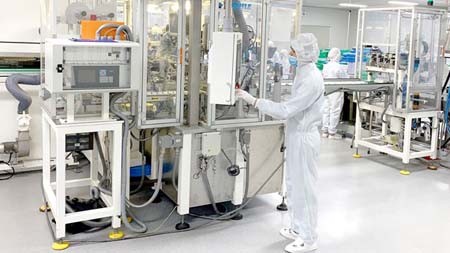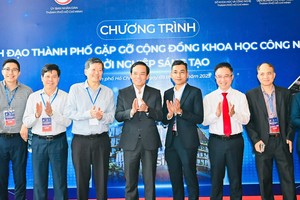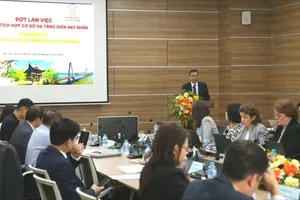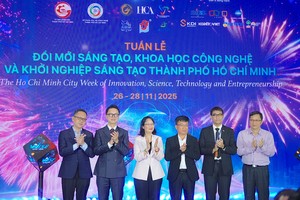
Since the beginning, there have been 157 projects with valid investment certificates in SHTP, having the total capital of nearly VND44,100 billion (approx. US$1.87 billion) and VND57 billion ($2.4 million) for 108 domestic and 49 foreign projects respectively.
At present, 79 of them are in smooth operation, creating hi-tech products worth $17 billion in 2019, an increase of 19.28 percent compared the previous year and completely fulfilling the expected goal.
SHTP contributed 37.05 percent to the general export rate of Ho Chi Minh City (HCMC) last year.
SHTP’s Management Board actively boosted the growth of supporting industries for hi-tech products in the park, resulting in continuous rises of domestic content in these goods.
Particularly, from 2011 to 2016, the domestic content ranged between 8 percent to 10 percent and then maintained its rise to 33 percent at the moment.
Head of SHTP’s Management Board Nguyen Anh Thi shared that in the past few years, businesses in SHTP have increased research and development (R&D) activities as well as training cost to form the domestic high-leveled human resources.
As a result, a significant proportion of staff in R&D departments of companies here, including leading firms in the region like Datalogic, Samsung, or Nidec, are the Vietnamese. Large corporations such as Nidec and Samsung have operated research centers in SHTP specially to support their own manufacturing activities.
Seeing that certain enterprises have not paid much attention to R&D and encountered obstacles since they are quite new, SHTP has offered supporting policies and preferential loan mechanisms in order for them to self-research new products or to delve into transferred technologies.
Until now, SHTP has welcomed several research and manufacturing projects using state budget with the capital of over VND500 billion ($21.16 million) to answer both domestic and international demands. Many of these participated in national hi-tech development programs and the stimulus fund of HCMC.
However, presently, the high rate of manual laborers, accounting for nearly 55 percent, in SHTP is an issue to tackle. This workforce is mostly employed in factories like Nidec, Samsung, Sonion, and Jabil, where there is a large scale of manufacturing in the fields of precision mechanics, electronics, home appliances, and the production does not require high-leveled workers.
To become a smart, innovative hi-tech part, SHTP needs to achieve certain goals, in compliance with directions of Chairman of HCMC People’s Committee Nguyen Thanh Phong.
Firstly, it has to introduce the Hi-tech Park Regulations to promote hi-tech producers and incubation centers. This includes criteria to select investment projects into SHTP which can match the ‘Smart City Transformation’ project, especially those related to Industry 4.0.
Secondly, SHTP should increase the use of information technology and artificial intelligence in administrative management to ultimately create a modern management model. It should also upgrade the R&D Center into the Applicable Research Institute, the Incubation Center into the Innovative Center, and the Training Center into the High-leveled Human Resources Training Institute.
Along with that is a boost in domestic and international cooperation between Foreign Direct Investment (FDI) companies and Vietnamese ones, between Vietnam National University HCMC and businesses, between scientists and companies in order to commercialize hi-tech research results and develop a domestic supply chain.
The establishment of the Saigon Innovation Network Hub in Silicon Valley in the US to expand the market of made-in-Vietnam products is also a goal.
The last one is the construction of a Scientific-technological Park to promote the growth of an innovative smart urban area in the East of HCMC.
























